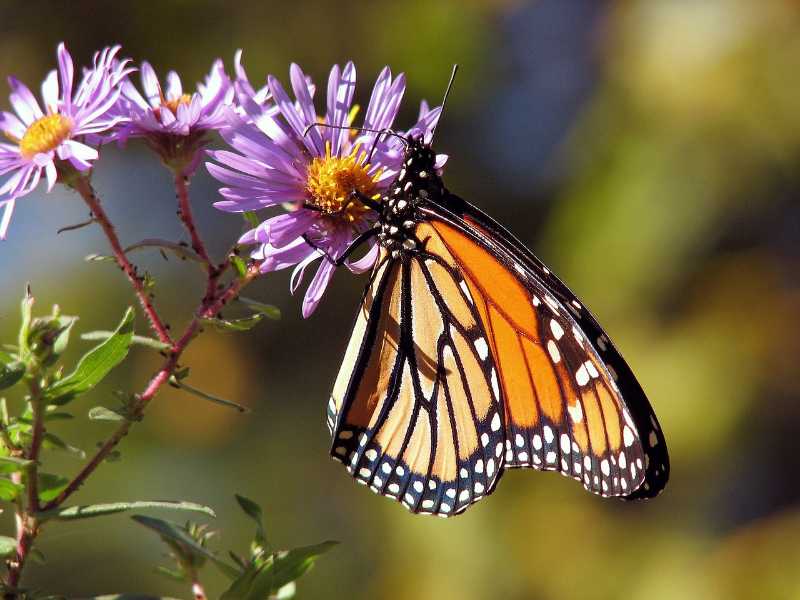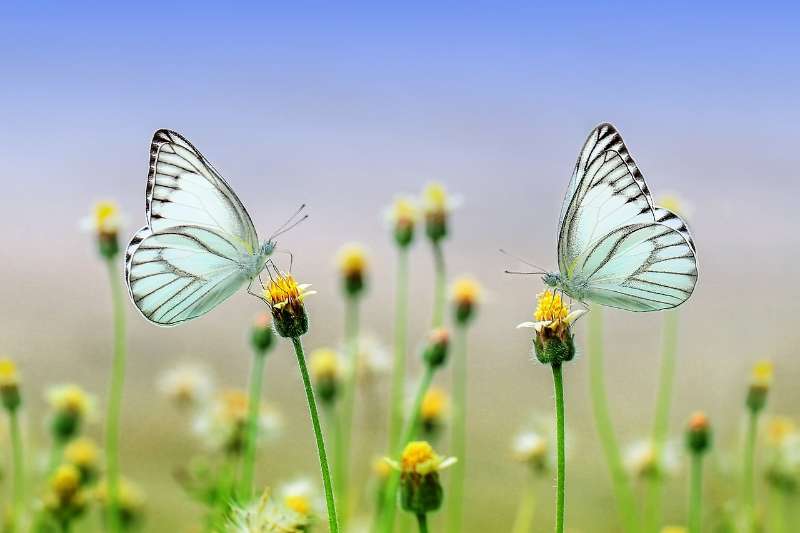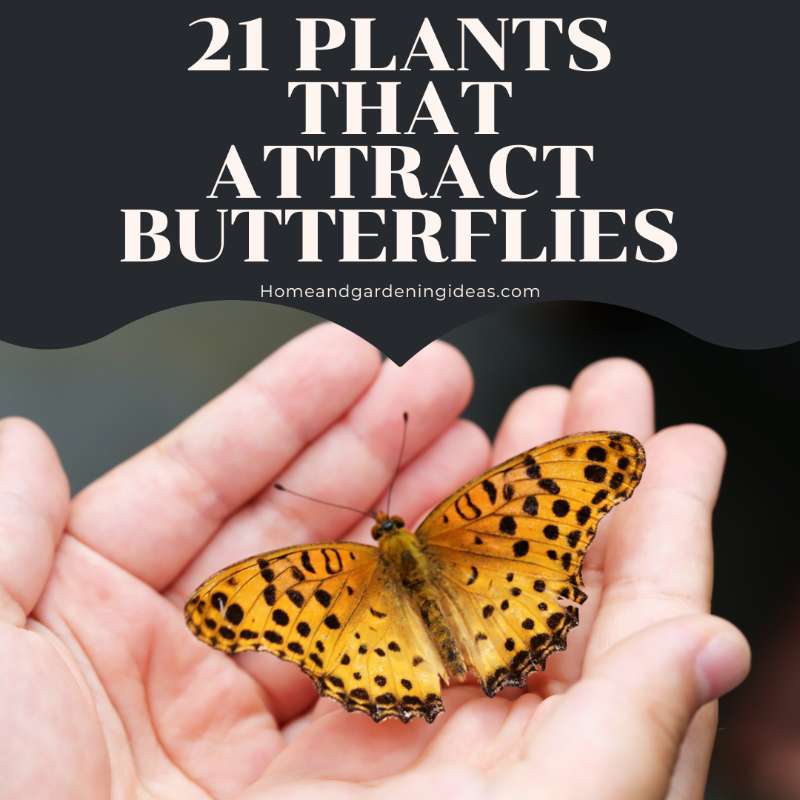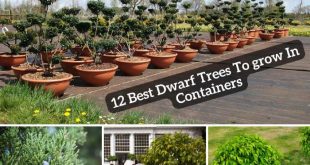21 Plants That Attract Butterflies
Butterflies, those exquisite creatures adorned in beauty, are irresistibly drawn to all that is sweet and captivating. To summon them is to offer a token of their preference – nectar from the plant kingdom. From the grandeur of the Alexandra birdwing (Ornithoptera alexandrae), the world’s largest butterfly, to the delicacy of the Micropsyche ariana, the tiniest of its kind, and the ubiquitous Painted Lady (Vanessa cardui) that graces every corner of the globe, these winged wonders populate our world with over 20,000 distinct species.
The Butterfly’s Journey:
The life cycle of a butterfly unfolds in four stages: Egg → Larvae/Caterpillar → Pupa/Chrysalis → Adult Butterfly. Each phase serves a distinct purpose, from providing shelter and nourishment to facilitating metamorphosis. As the adult butterfly emerges, its primary mission is to reproduce, contributing to the grand tapestry of life.

Metamorphosis Unveiled: The Butterfly’s Four Acts
The butterfly’s life cycle unfolds in four acts: Egg → Larvae/Caterpillar → Pupa/Chrysalis → Adult Butterfly. Each phase of this intricate dance holds a distinct purpose. The eggs serve as temporary shelters for the Larvae, or Caterpillars, nurturing them until independence beckons.
The Caterpillar, in its ravenous consumption, hastens its transition to a Pupa or Chrysalis. Within this cocoon, metamorphosis transpires – a wondrous process assembling the essential components of adulthood. As the adult butterfly emerges, its mission to reproduce commences immediately, driving it to fulfill its role in the grand tapestry of life.
Gardening the Dance: Cultivating Host Plants for Caterpillars
A garden bedecked with plants that caterpillars can feast upon becomes a haven for the butterfly lifecycle. These host plants, their foliage nourishing the caterpillar brood, unwittingly beckon the butterflies that lay the eggs destined to yield these tiny creatures. If the goal is to observe the complete transformation from egg to caterpillar to adult, concentrating on cultivating host plants becomes the heart of the matter. Yet, as the resulting butterflies take their maiden flights in pursuit of mates and nectar, the garden’s vibrant dance persists. To retain these delicate dancers amid the blossoms, a selection of sumptuously beautiful plants, exuding scents that tempt the senses, is required.

Creating Butterfly Havens
In their innate brilliance, butterflies exhibit discernment, selecting plants on which to deposit their eggs – safe havens for emerging caterpillars. However, a dedicated gardener, yearning for a bustling butterfly haven, should curate a collection of diverse plants to accommodate all stages of the butterfly’s life cycle.
Numerous plants possess the allure to captivate butterflies, but the following 21 stand out with their sweet-scented nectars that beckon effortlessly. Their broad leaves offer graceful landing pads for these delicate creatures, while their foliage serves as a banquet for caterpillars, hastening their journey to pupa. These plants boast vibrant hues and unique splendor, thriving on continents worldwide.
The Enchanting Array: 21 Nectar-Rich Plants
Here are the 21 plants known for captivating butterflies:
- Blueberries: Vaccinium spp
- Camphor Tree: Cinnamomum camphora
- Cherries: Prunus persica
- Citrus: Citrus spp
- Clover: Trifolium spp
- Cudweed: Gnaphalium spp
- Daisy: Bellis perennis
- False Nettles: Boehmeria cylindrica
- Joe-Pye Weeds: Eupatoriadelphus spp
- Lavender: Lavandula spp
- Milkweed: Asclepias tuberosa, Asclepias curassavica
- Nettles: Urtica dioica
- Paw Paw: Asimina triloba
- Passion Flowers: Passiflora spp
- Pearly Everlasting: Helichrysum spp
- Strawberry: Fragaria ananassa
- Sunflower: Helianthus spp
- Sycamore: Acer pseudoplatanus
- Tulip: Tulipa spp
- Thistles: Cirsium discolor
- Zinnia: Zinnia elegans
Crafting a Haven: Beyond Plants for Butterfly Enchantment
However, the art of attracting butterflies extends beyond cultivating these plants. Creating an environment that caters to their needs is paramount. Aside from lush vegetation, providing a sunny sanctuary allows these creatures to bask in warmth. Additionally, the availability of mud or marshy soil offers vital mineral nutrients and hydration, essential to their well-being.
Guardians of the Garden: A Call to Avoid Harmful Practices
Conversely, certain practices are best avoided. Steer clear of pesticides and herbicides in your garden, as these indiscriminate agents pose equal threat to butterflies and beetles alike. Many butterfly species have teetered on the brink of extinction due to human activities. Numerous are now classified as endangered, imperiled by the relentless encroachment of human civilization into their native habitats.
Nurturing the Dance: Cultivating Beauty, Preserving Wonder
Cultivating splendid flora for butterflies and imparting the significance of this endeavor to the younger generation holds promise. As they witness the rapid metamorphosis displayed by these creatures, the seeds of stewardship are sown. This commitment ensures the continued presence of butterflies within our world, safeguarding both their existence and the ecosystems they grace.
A Symphony of Life: Encouraging Harmony Through Nature
Consider identifying the plants from the list that most captivate butterflies in your vicinity. By cultivating these enchanting specimens, you extend an invitation not only to behold their beauty but also to provide a sanctuary for some of the most vulnerable inhabitants of our planet.
Synopsis: A Symphony of Beauty and Purpose
Numerous plants possess the power to captivate butterflies, yet 21 stand out for their potent combination of sweet-scented nectars, vivid blossoms, and nourishing leaves for caterpillars. In this harmonious interplay, we find the essence of nature’s enchantment.
 Home and Gardening Ideas At home and Gardening ideas we believe inspiring readers about homesteading, self sufficiency
Home and Gardening Ideas At home and Gardening ideas we believe inspiring readers about homesteading, self sufficiency







